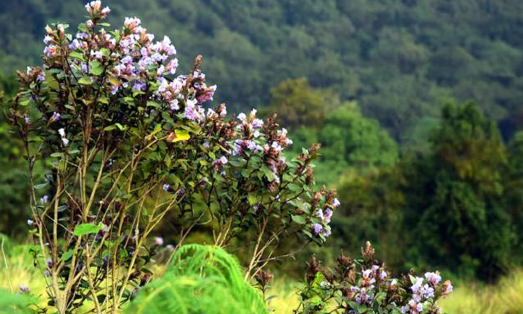Neelakurinji (Strobilanthes kunthiana), a flowering shrub that blooms once every 12 years, is now classified as Vulnerable (Criteria A2c) on the IUCN Red List.
The species was not previously evaluated under IUCN standards due to its unique blooming cycle and ecological challenges.
STROBILANTHES KUNTHIANA:
- It is an endemic shrub of three-metre height, seen only in the high-altitude shola grassland ecosystems of five mountain landscapes of southwest India at an elevation of 1,340–2,600 m.
- The scientific name of the Neelakurinji is named after the Kunthi River in Kerala's Silent Valley National Park where it is abundantly found.
- They are semelparous (reproducing only once in a lifetime) with showy synchronous blooming and fruiting every 12 years at the end of the life cycle.
- Known for their massive blooming, they impart purplish-blue colours to the mountain grasslands and are popularly known as Neelakurinji (Blue Strobilanthes) blooms.
- The species has 34 subpopulations within 14 ecoregions of the high-altitude mountain ranges of southwest India, with 33 subpopulations in the Western Ghats and one in the Eastern Ghats (Yercaud, Shevaroy Hills).
Most subpopulations are in the Nilgiris of Tamil Nadu, followed by Munnar, Palani-Kodaikanal, and Anamalai mountains. - Main Threats: Major threats include habitat loss from tea and softwood plantations, urbanisation, invasive species, and climate change. Approximately 40% of its habitat has been lost.


-1721391937657.png)

